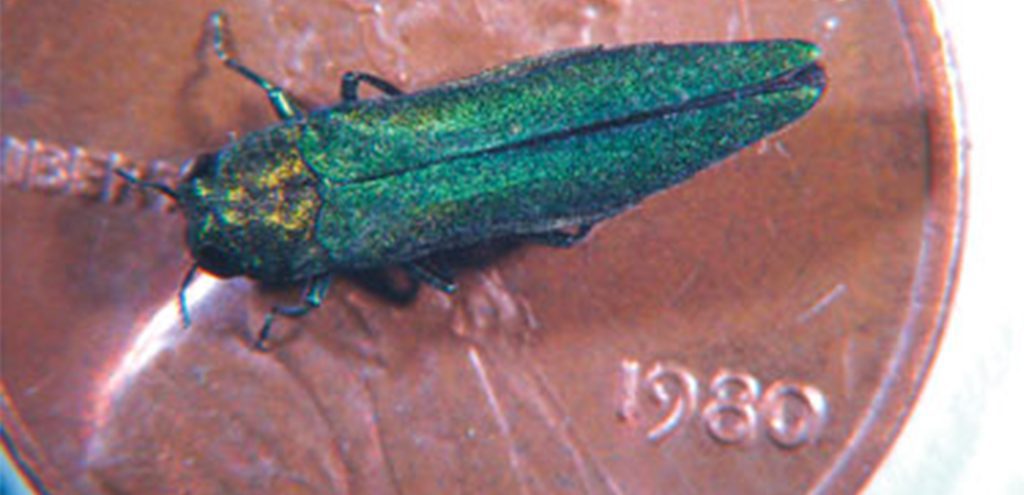
Remember just last week when temperatures dipped into the negative 20s in much of the upper plains? While most of that was terrible for humans, it turns out there is one potential upside: the dangerously cold temperatures could help in the fight against emerald ash borer.
Emerald ash borer (EAB) larvae live in the bark of ash trees during the winter, and they survive by generating chemicals that keep them from freezing. But, when it gets to 30-below zero or colder, like it did in many places last week, it’s even too cold for many of the larvae. Rob Venette, a USDA Forest Service research biologist, said when it gets that cold, about 70-90 percent of the larvae may be frozen, an encouraging statistic.
“The precise relationship between cold and EAB mortality changes a bit from year to year,” Venette noted, adding in 2014, when it was 23-below zero in the Twin Cities, about 60-70 percent of the larvae was killed in most locations that were sampled.
The cold snap didn’t wipe out the pests for good, unfortunately. Wisconsin Department of Natural Resources official Andrea Diss-Torrance says the polar vortex won’t cause the insect to go extinct, but the cold could buy landowners time to treat trees that haven’t been infected yet.
“The challenge, of course, is that they’re going to be a few insects that survive this extreme cold and they’ll help to re-establish some of those populations,” said Venette. “Within a year or two, unless it’s cold again, we expect those populations to be back where they are about now.”
This invasive beetle larvae burrow under a tree’s bark and cut off its nutrient pathways, slowly starving and killing the tree. When a tree starts showing signs of an emerald ash borer infestation, it usually dies within one to three years. The invasive insect spreads quickly, killing many ash trees in its path.

